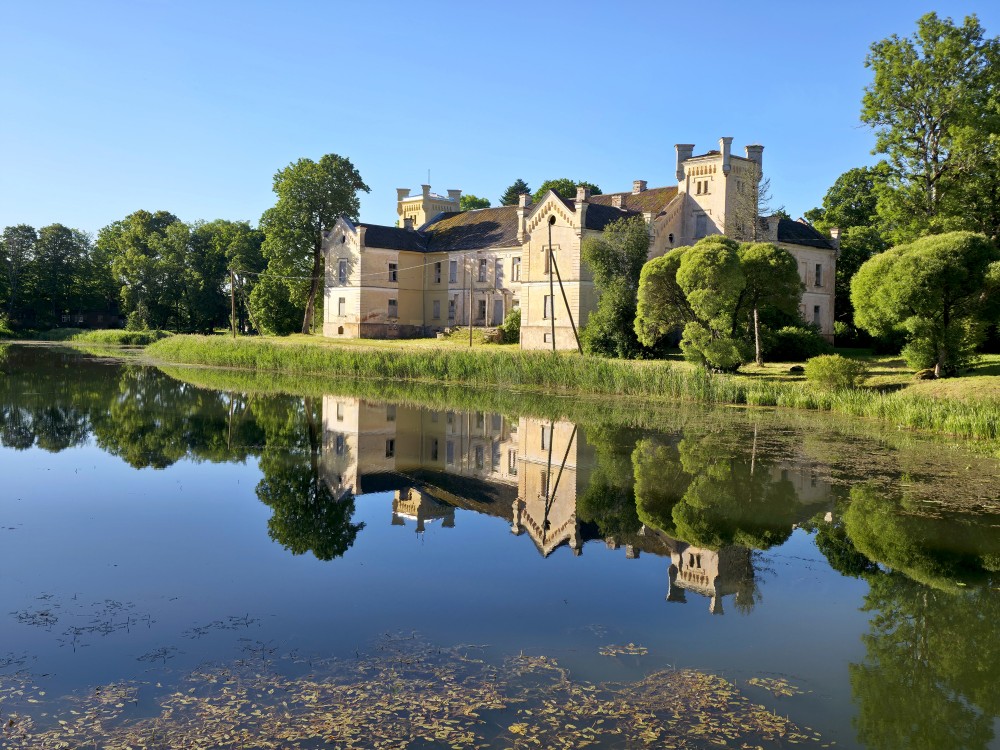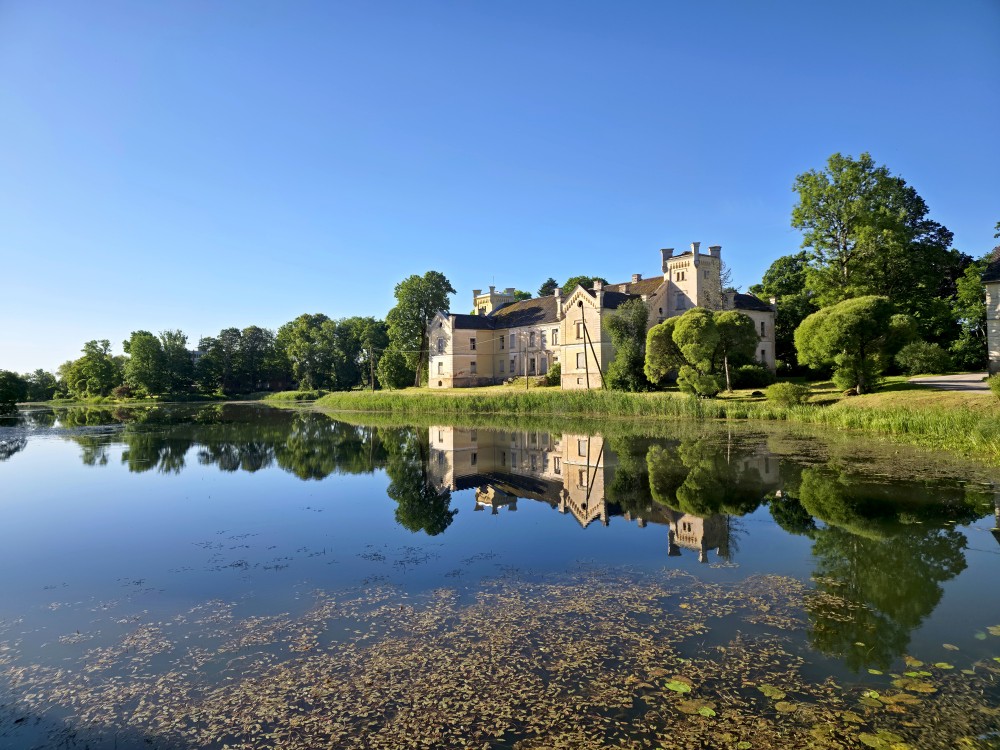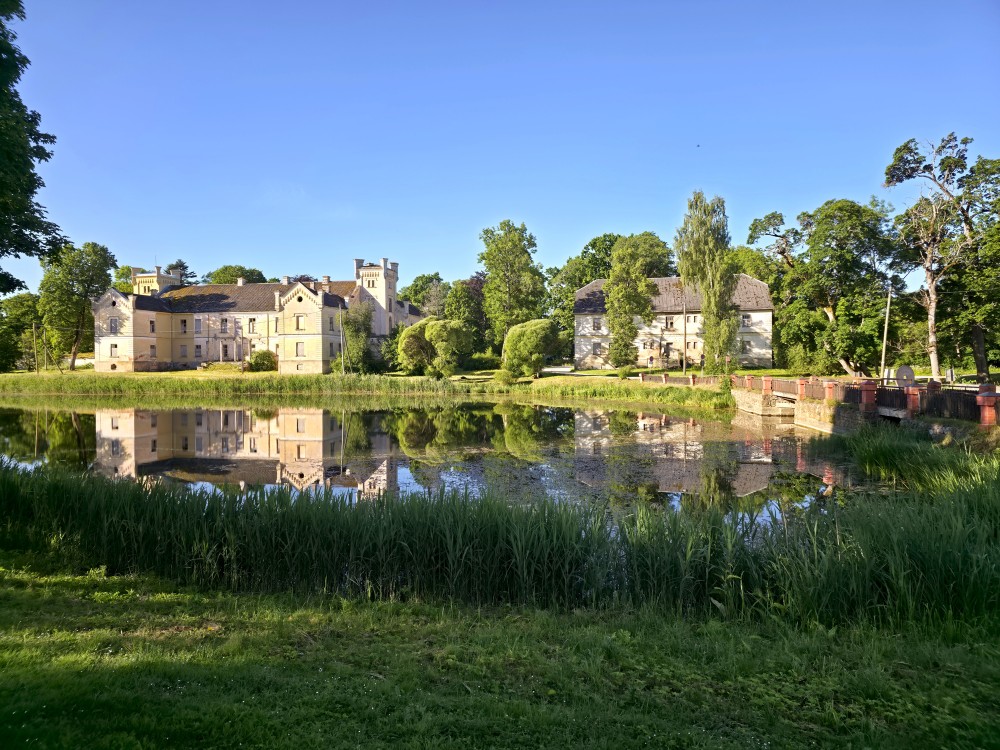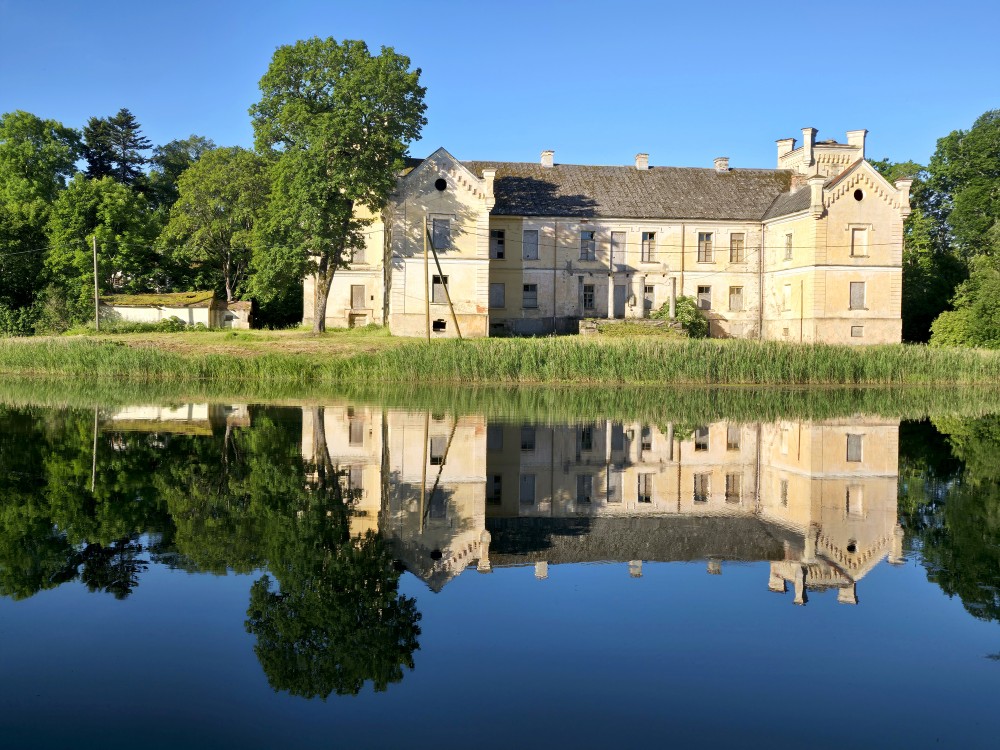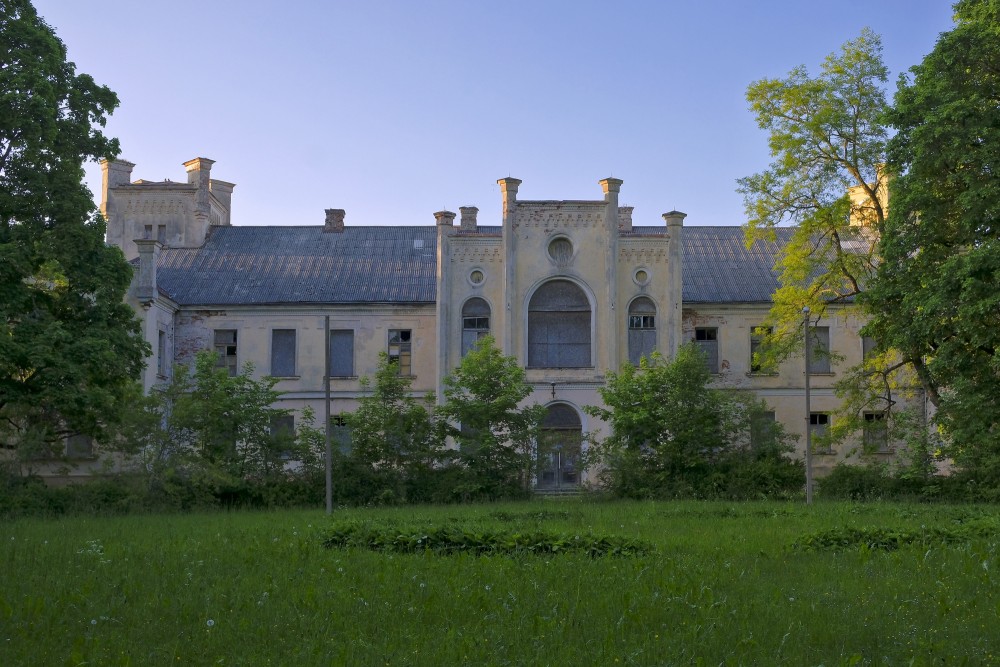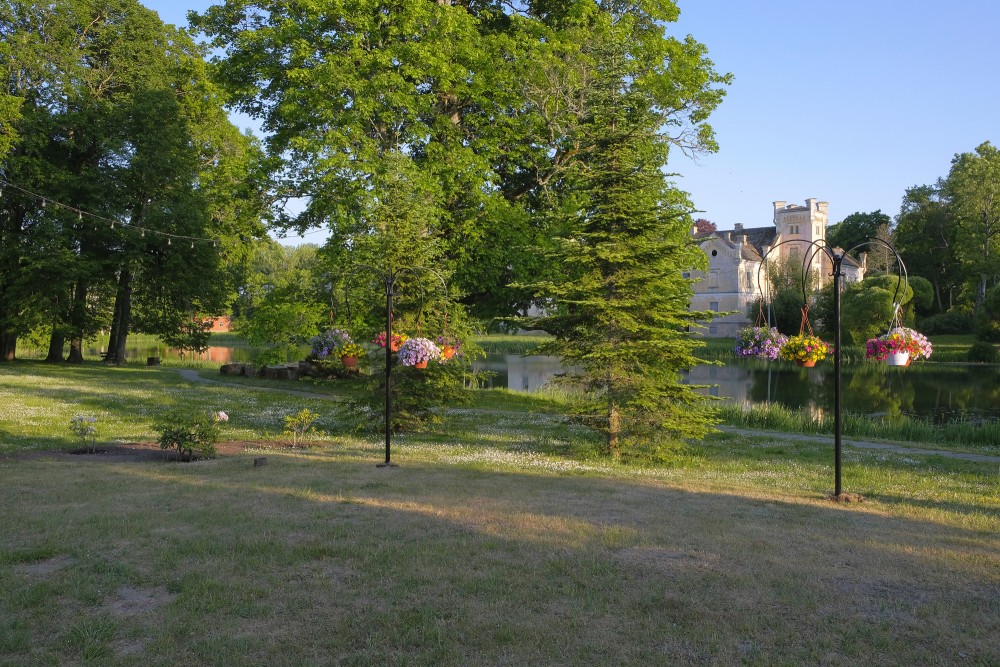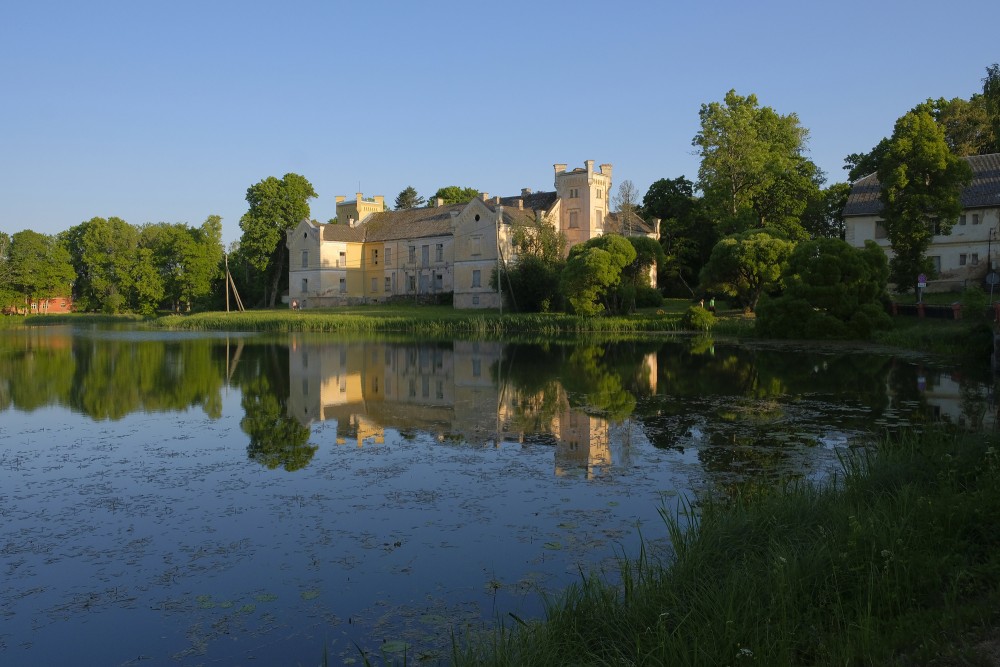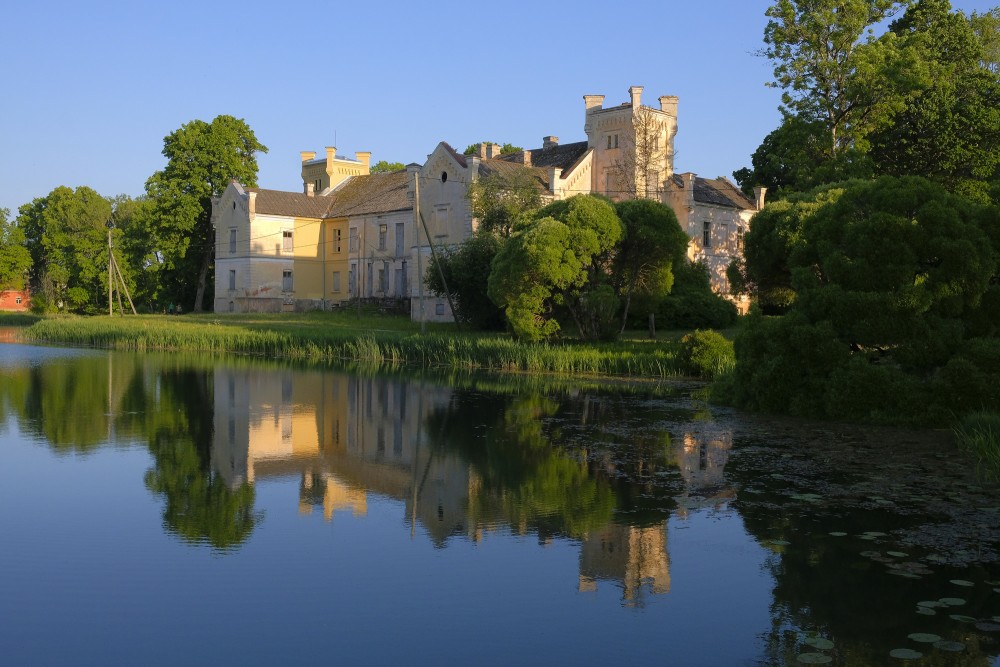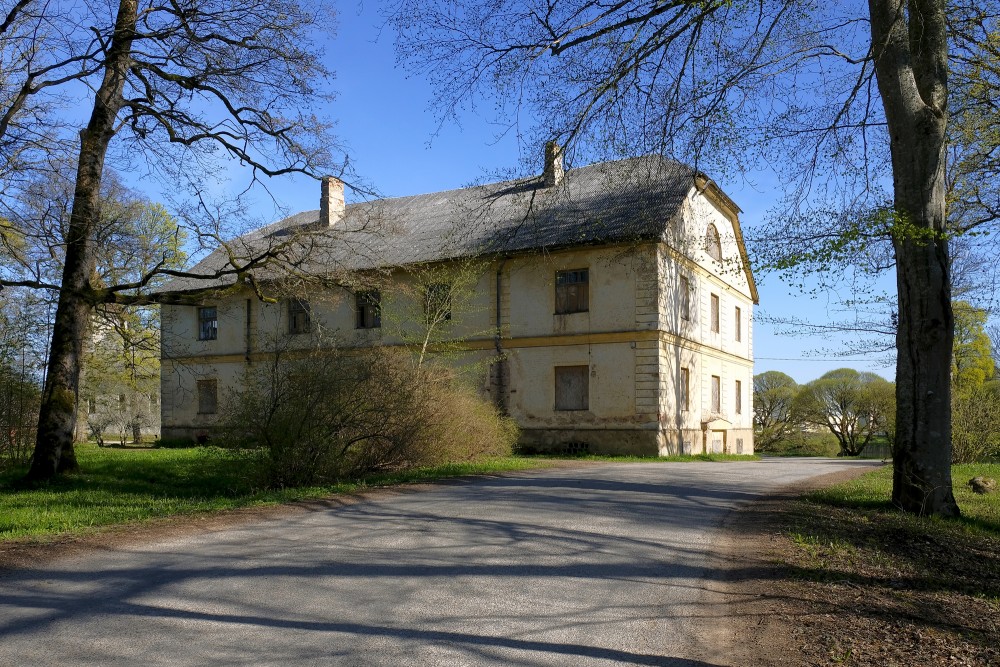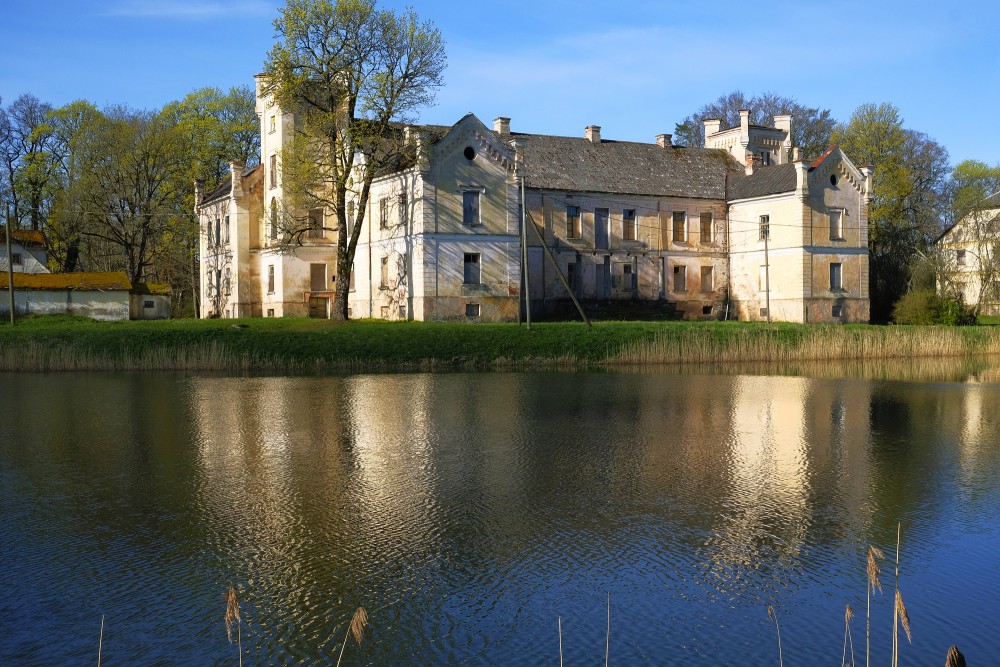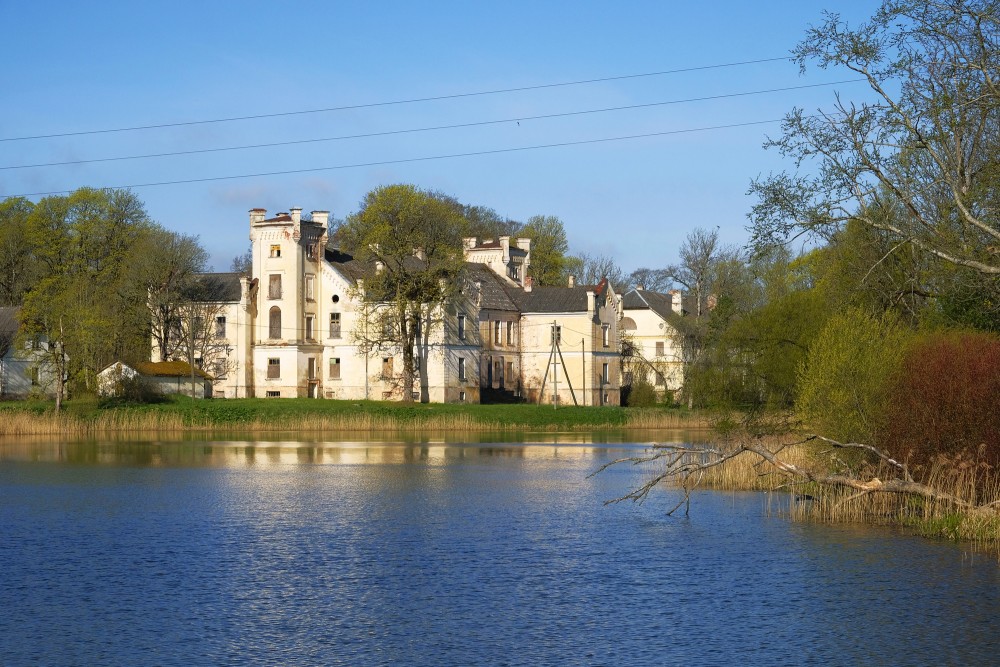Cīrava manor complex
Cīrava Palace
Cīrava Palace (Latvian: Cīravas muižas pils; German: Schloß Zierau) is located in the village of Cīrava, Cīrava parish, Aizpute municipality, Latvia. It is a national architecture monument included in the list of the culture monuments under state protection. The oldest county administrative documents relating to the subsequent estate are no longer found in publications or extracts from the Baltic German historians archives.
History
The palace has its roots in a time when the Aizpute and Sakaslejas county belonged to the bishopric of Courland. It was built in 1752 as a hunting palace for the German Baltic baron family von Manteuffel-Szoeges. It was an unimpressive, simple building. In 1868 the palace was rebuilt and expanded in the Tudor–Neo-Gothic style by the project of Teodor Zeiler. Interior elements in the palace are partly preserved, there are ornamental plafonds in some rooms and hearth with marble decorations dating back to beginning of nineteenth century. After this reconstruction, the palace became a quite impressive building with very individual forms and look.
On 16 December 1730 the king confirmed that Otto Friedrich von Behr and his wife Katharina, and their descendants, were the owners of the old Cīrava manor. On 10 August 1774 King Stanisław August Poniatowski confirmed Herman Friedrich von Behr and his wife Elizabeth, and their descendants, as the new owners of the estate. In October 1781 the property was inherited by Šarlote Katarīna, and in the summer of 1781 it was acquired by Karl Gothard Ernst von Manteuffel-Szoeges, landlord of Kazdanga Palace.
In the spring of 1921 the estate was nationalized and became part of the Latvian state, which took hold of the manor, some 700 ha. of arable land and 150 ha. of grasslands. From 1922 until 1951 the technical school of forestry (Meža skola) was housed in the palace. Later it served as technical school of agriculture. The last few decades the palace has stood empty and needs renovation jobs. There are some plans to renovate it and transform it to a hotel.
Surroundings
The palace is surrounded by a nineteenth-century landscape park. There is also a decorative pond with two islands and a big collection of trees and bushes in the park. G. Kuffalt, the main gardener of Riga, took part in the creation of the Cīrava Palace park.
Cīrava forest park
For those who enjoy strolls and beautiful scenery – a hiking trail with benches and bridges has been created in Cīrava forest park. Most of the trail leads along the banks of the river Durbe and has views of the many curves of the river and obstructions made by beavers. There are hornbeam, birch, aspen and pine groves along the trail.
Cīrava Watermill
The Watermill of Cīrava Manor is an architectural monument under the state’s protection. In 2002, the Watermill was included among the 100 greatest industrial heritage monuments in Latvia and represented the Latvian cultural heritage at the events organised for the European Heritage Days. Cīrava Watermill was built in 1881. Currently, it hosts the centre for non-formal education centre and artists’ residence and culture called “Cita Abra”. The centre is open for visitors in summer.
en.wikipedia.org
visitaizpute.lv
